Paintshaver Pro
Outfitted with an aluminum head assembly and a three-blade cutterhead
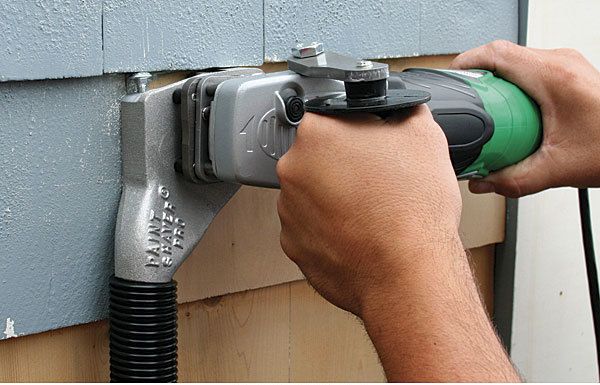
I’ve known about the Paintshaver Pro for years. I knew about it long before I started procrastinating about the failing paint on my 1920s house—and I can procrastinate with the best of them, so that’s no small amount of time. The tool seemed too good to be true, however, and priced too high to risk being proved right. It’s funny, though, how little time you have to spend with a handheld scraper before that $600 price tag starts to sound reasonable. Believe me when I tell you that it’s worth every penny.
Manufactured by American International Tool, the Paintshaver Pro is a Hitachi angle grinder outfitted with an aluminum head assembly and a three-blade cutterhead. The design of the head assembly allows you to shave paint from the butt and the face of siding at the same time, and the shavings are directed to the attached vacuum hose for collection.
The surface of the wood is left fuzzy, which requires work with a random-orbit sander, but the Paintshaver Pro is fast. You could likely cut through the layers of paint in one pass (depth of cut maxes out at 1⁄16 in.), especially if you had the more powerful 8-amp model ($700). For me, though, the ideal depth of cut was when I could get to bare wood with two or three passes. The tool doesn’t discriminate between paint and wood, so light passes not only offered more control over the tool itself, but also a better sense of when I had reached bare wood. Going too deep means more time spent feathering out the transitions from shaved to unshaved wood.
The integral guard and the vacuum nozzle surrounding the cutterhead, as well as the radius of the cutterhead itself, will leave spots that can’t be reached. The tool’s head assembly can be rotated 90°, which is helpful in some of these situations, but this is really more for control and comfort than accessibility.
The tool’s tungsten-carbide blades are said to strip up to 3000 sq. ft. of lead paint or 6000 sq. ft. of nonlead paint, and a set of replacement blades is $49. To prolong the life of the blades, nails should be set below the surface prior to stripping. Faced with an entire house of face-nailed clapboards, I opted at first for a shortened blade life rather than spending hours with a nail set. I quickly learned that if the spinning cutters catch a nail the right way, they will pull it out of the wood in a twisted spiral of fast-moving shrapnel. Along the way, the nail likely will split the wood it was fastening.
In spite of occasional encounters with a nail, the blades held up very well; once they were dull, I could rotate each one with a hex wrench to expose one of six fresh cutting edges.
When hooked up to a HEPA vacuum, the Paintshaver Pro claims to meet RRP guidelines for safe lead-paint removal. It’s hard to evaluate whether the fine lead dust was all being collected in my vac, but I can say that this tool peppered my whole upper body and face with paint chips during use.
Bottom line: This tool is expensive and somewhat crude, and it takes practice. It’s also undeniably fast and effective. If you’re trying to make money or just value your time, it’s a no-brainer.




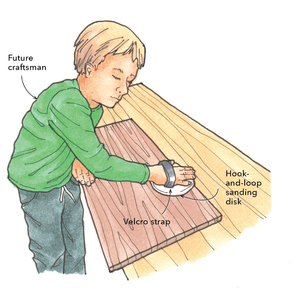







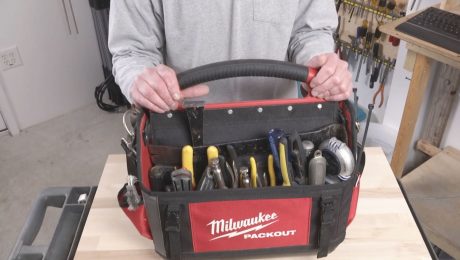
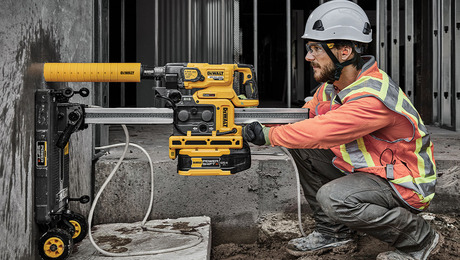
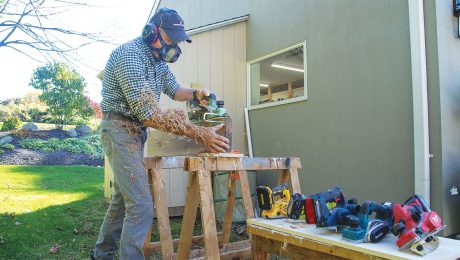











Comments are closed.